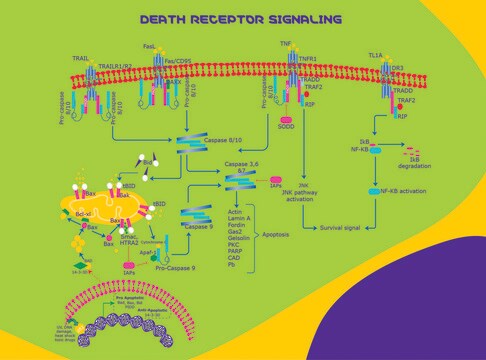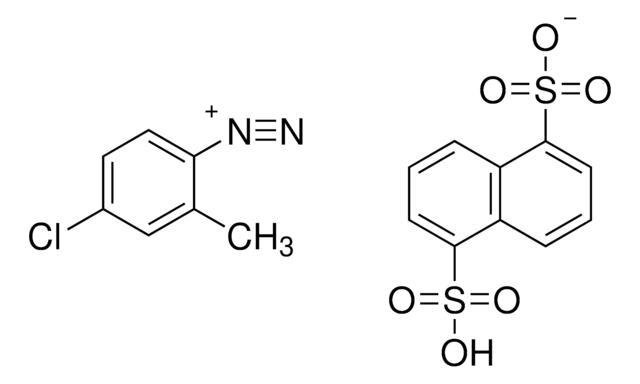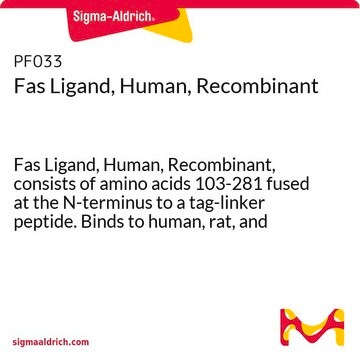GF092
TRAIL Protein, Recombinant human
Human TRAIL (TNF-Related Apoptosis Inducing Ligand), also called APO2 Ligand, is a cytotoxic protein which activates rapid apoptosis in tumor cells, but not in normal cells.
Synonym(s):
Apo2 Ligand
About This Item
Recommended Products
biological source
human
Quality Level
recombinant
expressed in E. coli
Assay
>98% (SDS-PAGE and HPLC)
form
solid
mol wt
19.6 kDa
manufacturer/tradename
Chemicon®
technique(s)
cell culture | mammalian: suitable
impurities
<0.1 ng/μg Endotoxin (of TRAIL/Apo2L; 1EU/μg)
input
sample type hematopoietic stem cell(s)
suitability
suitable for molecular biology
NCBI accession no.
UniProt accession no.
shipped in
dry ice
Gene Information
human ... TNFSF10(8743)
General description
Application
Biochem/physiol Actions
Physical form
Storage and Stability
Legal Information
Disclaimer
Storage Class Code
11 - Combustible Solids
WGK
WGK 3
Certificates of Analysis (COA)
Search for Certificates of Analysis (COA) by entering the products Lot/Batch Number. Lot and Batch Numbers can be found on a product’s label following the words ‘Lot’ or ‘Batch’.
Already Own This Product?
Find documentation for the products that you have recently purchased in the Document Library.
Our team of scientists has experience in all areas of research including Life Science, Material Science, Chemical Synthesis, Chromatography, Analytical and many others.
Contact Technical Service







